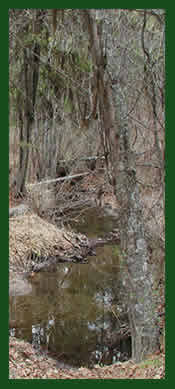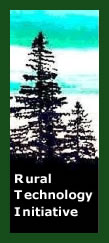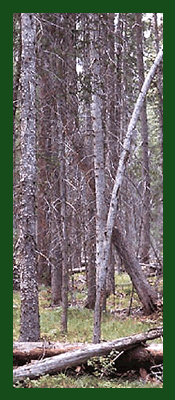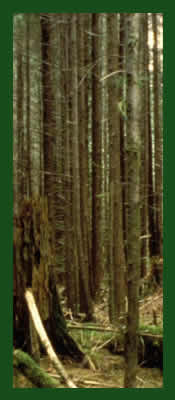|
The Rural Technology Initiative (RTI) Advisory Board identified
riparian management as the key to sustainable forest management
for many small owners. RTI is developing alternate plan templates
for riparian zones. These plans address differences in riparian
zones, providing ecologically and economically sound alternatives.
This page provides links to information important to the development
of alternate plan templates.
 |
Developing management templates
that increase biodiversity while maintaining economic viability
in intensively managed forests
Kevin Zobrist, Forest Management and Economics
Analyst
Presented September 13th and 15th,
2005
The University of Washington and RTI reported
to the House Committee on Resources and the USDA on the
results of a recently completed study involving biodiversity
on intensively managed forests. Click
here to watch the streaming video presentation.
|
Developing alternate plan templates to achieve riparian
goals on family forest ownerships in Washington
|
 |
There has been increasing interest in the creation of templates
to facilitate the development of alternate riparian management
plans for family forest owners in Washington State. While
several management options for these landowners are established
in the Forests and Fish Rules, landowners may also submit
site-specific alternate plans. The purpose of alternate plans
is to "meet riparian functions while requiring less costly
regulatory prescriptions" (RCW 76.113-110). RTI case
studies indicate many family forest owners will have significant
economic losses given the management options available under
the FFR (see RTI Fact
Sheet 2 and Fact
Sheet 20). A funded Forestry Riparian Easement Program
(FREP) has the ability to help only a small proportion of
these landowners.
At the same time, opportunities have been identified where
an alternate plan approach may do a better job of meeting
riparian function than can be achieved under the rules. These
opportunities include hardwood riparian stands that could
be converted to conifer, eastside riparian forests that have
health issues leaving them vulnerable to insect outbreaks
and fire, and overstocked stands that would benefit from thinnings
that may not be allowed or economical under the rules.
|
|
A streamlined process for the development and approval of
alternate plans is necessary to facilitate the large number
of landowners who could benefit from an alternate plan. The
Forest Practice Rules provide for the creation of template
prescriptions to simplify the development of alternate plans
for common situations (WAC 222-12-0403).
|
Legislative findings regarding alternate plans and templates
Below are links to the legislative documentation that sets
the parameters of our work. They are outside the RTI website
and will open in a new window.
|
Background Fact Sheets
Below are links to an array of fact sheets, all of which
have contributed to the development of alternate plan templates:
|
 |
• Fact
Sheet 2: Case studies examining the economic impacts of
the Forests and Fish rules on NIPF landowners in Western Washington |
| • Fact
Sheet 6: Defining and Using Biologically Based Targets in
Forest Management: Incorporating Forest Structure and Variability |
| • Fact
Sheet 8: The Impact of Riparian Forest Management on Shade
Production |
| • Fact
Sheet 9: The Impact of Riparian Forest Management on Large
Woody Debris (LWD) Recruitment Potential |
| • Fact
Sheet 20: Impacts of the Forest and Fish Rules on Non-Industrial
Private Forest landowners in north eastern Washington: Some
key consequences from riparian zone case study evaluation |
| • Fact
Sheet 24: The Emerging Consensus for Active Management in
Young Forests |
Background Report:
Below are related reports/papers that have been written by
RTI students, faculty, and staff. They contain significantly
more information that their related fact sheets, and they
tend to be more technically detailed.
|
Westside Templates
Below are fact sheets, articles, and presentations that show
how to develop sound alternate plans for Westside situations.
|
Eastside Templates
Below are fact sheets, articles, and presentations that develop
sound alternate plans for some Eastside situations.
|
 |
- Fact
Sheet 25: Alternate Planning for small forest landowners
in eastern Washington under the Forest and Fish Rules
- Newsletter
article on developing eastern Washington templates
(RTI News, Summer 2003)
- Video presentation on templates to address mountain
pine beetle risk:
- For dial-up modems (greater than 33 kbps), click
here.
- For high-speed connections with the Internet, click
here.
- Slides presentation delivered to Washington Farm Forestry
Association, September 2003:
|
|















